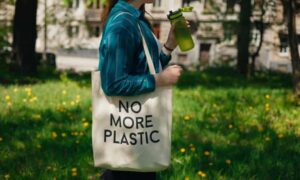
For several months last year, patrons of a Seattle coffee shop called Tailwind Cafe had the option of ordering their americanos and lattes in a returnable metal to-go cup. They could borrow one from Tailwind, go on their way and then at some point – perhaps a few hours later, perhaps on another day that week – return it to the shop, which would clean it and refill it for the next person. If the cup wasn’t returned within 14 days, the customer would be charged a $15 deposit, although even that was ultimately refundable if the cup was returned by the end of 45 days.
But the system quickly ran into trouble. It was “overwhelming” trying to explain the return system to every interested customer, said Tailwind’s head chef, Kayla Tekautz. Many were hesitant to participate after learning that they could only return the cups to Tailwind or the other drop-off location, six miles away. Plus, Tailwind’s QR code reader kept malfunctioning, requiring repeated visits from a mechanic. At the end of last summer, Tailwind quietly ended the scheme. “It just didn’t work,” Tekautz said.
In an effort to reduce consumption of single-use plastic, the city of Seattle has spent the past several years encouraging local businesses to offer reusable cups, dishes, utensils and packaging. Concertgoers at the Paramount theatre and attenders of the Northwest Folklife festival, for example, can now order their drinks in reusable polypropylene cups. Since 2022, students at the University of Washington have been able to check out bright green reusable food containers from a company called Ozzi.
These schemes are helping Seattle avoid single-use plastic and move towards a “waste-free future,” according to the city’s reuse website. It’s a target that is being pursued by many American cities, and at the global level too. Disposable plastic foodware and packaging, which accounts for nearly 40% of all plastic production, can only be phased out if there are robust, efficient reuse systems to replace them.
But some businesses, like Tailwind, have struggled to get reusable containers off the ground, often because of the small scale and disconnected nature of reuse schemes. Instead of pooling resources and employing just one or two large cleaning and logistics services, businesses have to choose between several competing initiatives – or in some cases have created and run their own programmes. The result is a slew of incompatible containers.
Having so many companies creating their own designs and logistics can be expensive, causing them to miss out on economies of scale that could make reuse more affordable and easily adoptable. According to Ashima Sukhdev, a policy adviser for the city of Seattle, she should be able to “pick up a coffee from my local cafe and then drop it off in the lobby of my office building. Or drop it off at the library, or at a bus stop.”
But what Sukhdev is describing would represent a highly unusual level of coordination across company lines and require big changes from consumers, who have been trained for 70 years to expect disposability in just about every aspect of daily life.
According to a recent report from the Ellen MacArthur Foundation (EMF), a nonprofit organisation that advocates for a “circular economy” that conserves resources, even companies that have pledged to dramatically scale down their use of plastics have only replaced 2% or less of their single-use containers with reusables. “To realise the full benefits of return systems, a fundamentally new approach is required,” the authors concluded.
